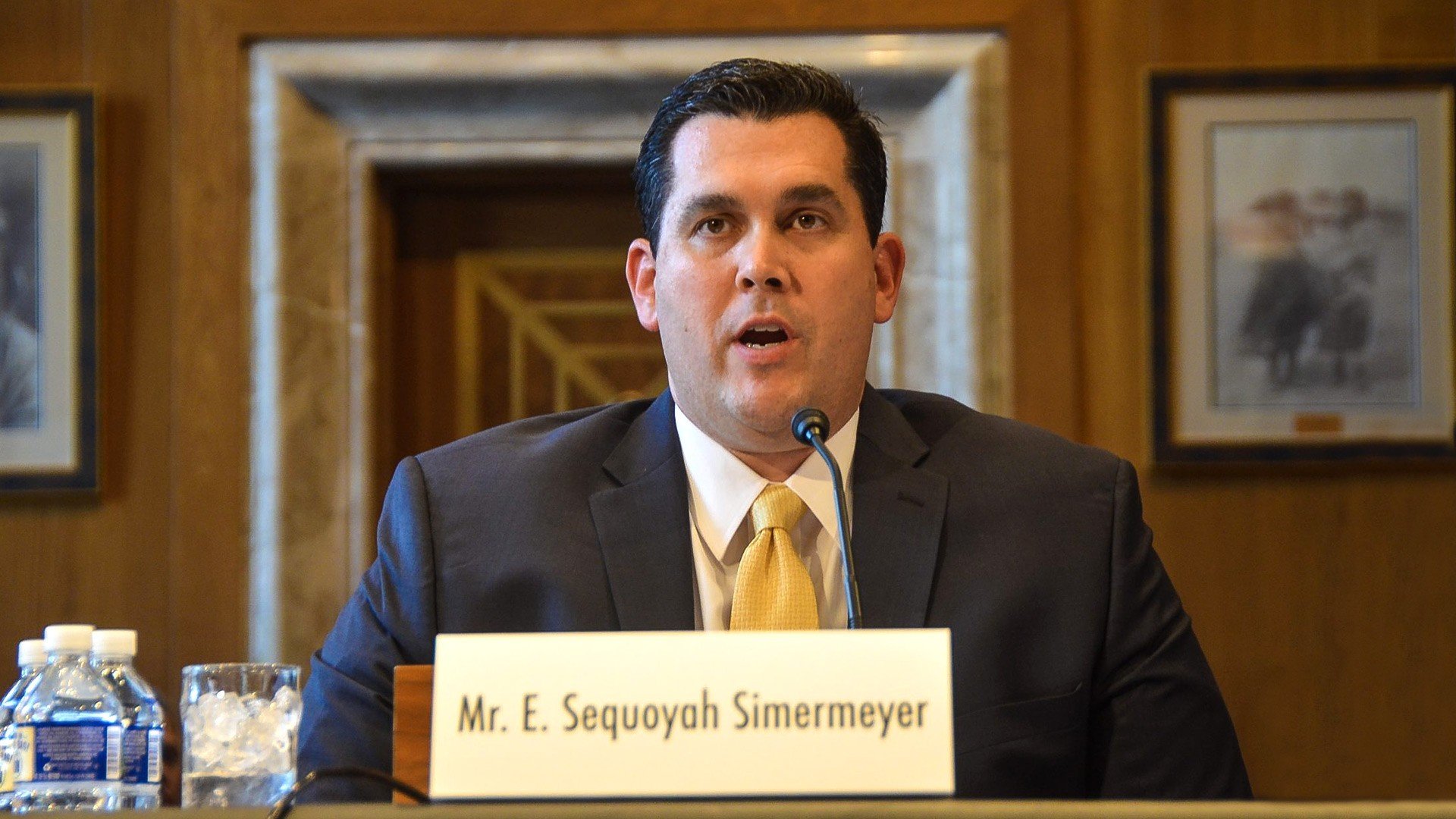As part of the latest edition of ICE London, National Indian Gaming Commission Chairman E. Sequoyah Simermeyer shared insights into the gaming regulatory frameworks of tribal gaming in the United States on a panel held February 6.
Participants learned more about the key differences and similarities between tribal regulation and other jurisdictions, and why gaming is crucial for Indian nations across the US, among other topics.
Yogonet caught up with Simermeyer, who this week announced would be stepping down from his role, after the panel to learn more about the presentation and the role the NIGC is called to play to further support the record-setting momentum in tribal gambling.
You are participating in a panel on the difference between European and US gaming regulations here at ICE. Can you give us a summary of your speech for this panel? And in which ways would you say that regulation in the US, and tribal gaming regulation in specific, is different from that in other markets?
One point that was important to share with the audience is that three different jurisdictions are involved in any gaming activity taking place in the United States, overseeing the operations. In the case of Indian gaming, taking place in Indian land, it was an opportunity to share how, like any other jurisdiction that regulates gaming, there are roles and responsibilities, whether it’s protecting the customer, protecting an industry asset, or protecting access to the industry through licensing and so forth.
Particularly in Indian gaming, although tribes were conducting gaming before 1988, in that year a federal framework was put in place explaining how gaming on Indian land is different than other parts of the industry. One of the important things that illustrates that is the fact that the revenue generated can only be used for five statutory purposes. It’s also important to know that the tribal government maintains a proprietary interest in the activity, and maintains management control unless they seek another alternative way to improve that relationship and management.
There’s also the fact that the framework creates different classes of gaming, which is unique to that 1988 law. Those different classes will dictate which of those three jurisdictions may have a role in the gaming activity, so it was a good opportunity to give that overview of it.
But the panel was also a good opportunity to talk about the strength of Indian gaming and its longevity for over three decades. Under this framework, it’s been able to have consistent growth in its revenues and also with its footprint in size. The industry in fiscal year 2022 was more than $20 billion in revenue and 248 tribal governments were licensing Indian gaming on Indian land, with 520 operations within 29 states.
The final point was to share that Indian gaming is different within every tribal community. For some, it may be a significant or primary source of governmental economic development. And it’s significant for that community and might be a job creator. It might help to fund critical social services and programs that are directed by the policy purposes of that tribal government.

How does the self-regulation of tribal gaming reduce redundancies in federal regulation? And how does it help provide more autonomy to tribes?
When the law was passed in 1988, one of the debates among lawmakers was how much the law would speak to the inherent sovereignty that tribes have as governments to regulate and oversee this governmental enterprise. This was a chance to make sure that each of those three jurisdictions derives authority from its own unique source and that it is distinct and inherent to its authority to govern.
One of the provisions in the 1988 law allowed for a tribal government to petition the NIGC to receive a certificate of self-regulation. One of the benefits in that is that it reduces the federal regulators’ role in oversight of activity at the operation. On-site reviews are reduced. There are also reductions in the sharing of some of the audit information.
What we have seen in the small population of tribes that have pursued this is an opportunity within the tribal government to communicate the strength of their regulatory capacity at the governmental level, and also to other neighboring jurisdictions, which are able to see the strength and quality of the regulation that the NIGC has been able to certify for that community. It supports and bolsters the public policy principle of developing strong tribal governments and supporting their growth and capacity.
As the agency works on the continued regulation of tribal gaming, what can the commission learn from the experience of other global stakeholders gathered here at ICE? Do you foresee the exchange of information across regulators and jurisdictions playing an important role going forward?
I think it’s important for the regulatory community across the broader global gaming industry to see what are good practices, for example, in cybersecurity and assessing risk and mitigating risk. There’s a lot that we can learn or exchange information with one another about effective and efficient oversight roles, whether that be sharing information related to licensing or something else.
From the National Indian Gaming Commission’s perspective, the 1988 federal framework opened a lot of flexibilities for how tribes might want to go about oversight of their operations and how tribal governments might want to shape those governmental enterprises. Seeing how other jurisdictions might have similar policy objectives and how the regulators there have worked to implement them can only make for a stronger Indian gaming regulatory community, learning by example and borrowing from other parts of the industry.
We are entering 2024 after a record performance last year for Indian gaming. Wow will the commission contribute to ensure that tribes maintain momentum over the coming months?
Each tribe is going to have its own strategy, based on its vision for the purposes of that enterprise in their community. It’s a very broad footprint, and for each tribe the situation is going to be different. As I mentioned before, for some tribes, gaming is an economic generator and a priority for its social service programs.
But one thing that can help from the regulatory perspective in that economic development is to be transparent, clear and consistent in how we’re explaining our role and explaining our interpretations. That’s why in the last two years we’ve worked really hard to look at our federal regulations to make sure that they’re modernized or appropriate, and that they are consistently able to be interpreted and applied across all the areas that we’re involved in.
What are the main challenges you foresee for the Indian gaming industry this year? How will the agency help mitigate operational risks such as the rise of cyber threats, which was a huge topic last year?
Engagement within the regulatory community and with the elected leadership at the tribal level around topics of cybersecurity is going to continue to be an area where the NIGC tries to support the work that is going on by promoting good practices. We’ve also worked hard to establish a network of subject matter experts at the federal level that can help inform the gaming regulatory community through agencies tailored just for cybersecurity purposes.
We’ve developed a lot of technical assistance, including on-site IT vulnerability assessments that our team can provide to give an initial snapshot of risks. And we’ve developed a significant exchange of resources and tech alerts that we hope to share more and more across different regulatory jurisdictions.














